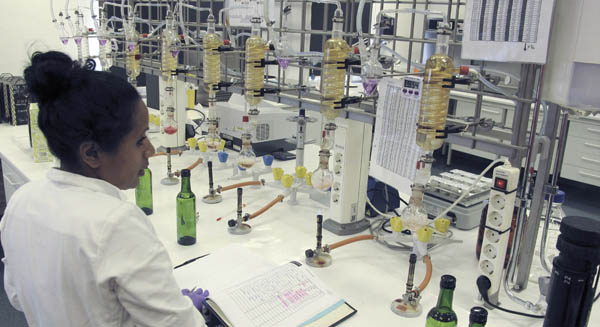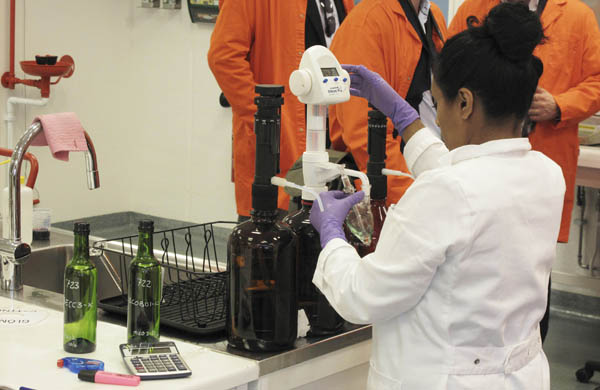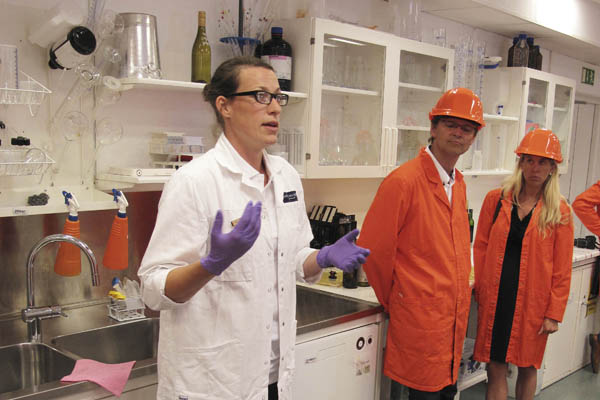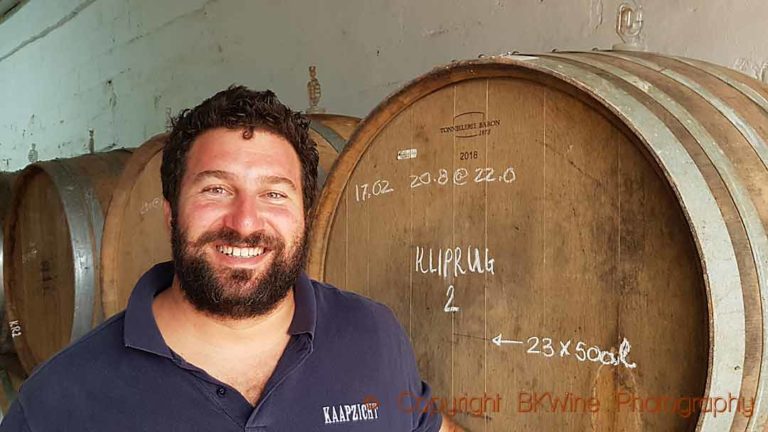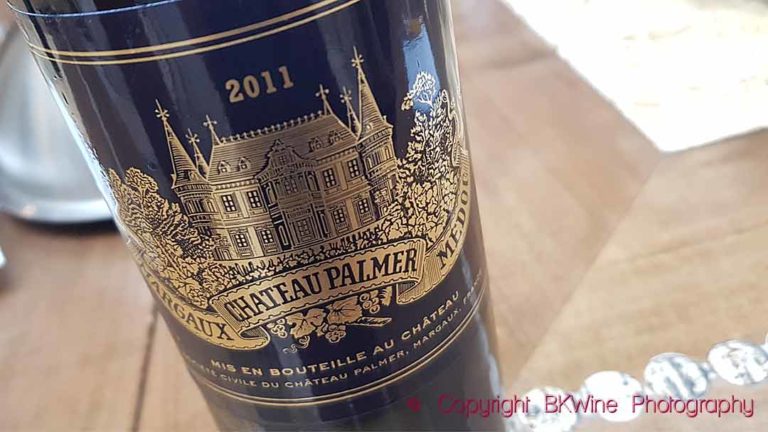Business, environment and customer response have given Sweden a winery on the Skåne plains
Nordic Sea Winery. It immediately turns very international. An English name on a plant in Sweden, created by a Greek, producing wines from countries such as Italy, Australia, and South Africa. Oenoforos has invested SEK 500 million (almost 50 million euro) on building a winery that produces 25 million litres of wine a year and has six resident winemakers. But it is not just about scale, but also customer relations and environmental concerns. BKWine’s Roland Eriksson was on site and met the CEO Takis Soldatos when the Nordic Sea Winery was opened.
It was a great day in Simrishamn on June 10, the opening of what some have seen as the ‘secret’ winery. A reception for the press and invited guests with speeches by, among others, the Governor of Skåne, Margareta Pålsson. There was a tour for all visitors in small groups, followed by a party with the majority of the country’s most renowned wine writers and local dignitaries. Employees of the Oenoforos Group mingled; everyone ate delicious snacks and drank Palmer blanc de blanc 2003 from magnum bottles.

The winery looks like a plain boring industrial building with a number of huge steel tanks to the right that really can hold just about anything that floats. But what is most impressive is the newly built restaurant and wine bar that is really exquisitely designed with elegant furniture and the ability to view movies about wine and the history of the winery.

To make it even nicer they have planted their own vineyard with over 30 different grape varieties, from chardonnay, cabernet sauvignon and pinot noir to cold-resistant varieties such as solaris. In about 5-6 years’ time it is estimated to be ready for harvest so they will then produce wine from their own grapes. They also have plans to perhaps eventually make sparkling wines in Skåne. And who knows, with the greenhouse effect might Simrishamn becomes a full-fledged appellation?
A smart businessman, willing to invest
When meeting Takis Soldatos for the first time, you notice right away that he is smart and a born businessman. After studying economics in his home country Greece, he began by chance to work in the wine industry. With the then monopoly importer, the state-owned Vin & Sprit (ed.: since sold to Pernod Ricard) as the only player on the market, he was sent to Sweden to promote Greek wines which was not the easiest. Alcohol advertising of all beverages over 3.5 % ABV was at that time prohibited. The EU Commission’s decision that led to that the Vin & Sprit import, export and production monopolies were discontinued in 1995 opened up a whole new market for new entrants in a profitable industry.

Updated: With his own capital Takis launches in 1995 a company that he calls Oenoforos. In 2005 Oenoforos takes over a struggling company called Carovin, but one that had many good names on its list. The big dream was his own winery. The first was Nordic Sea Winery (editor’s note: the winery has now been operational since 2008, but the official launch and completion of the project was in 2014). In 2009 they started a company called Vini Bella Terra in Apulia through which they bought the run-down Cantina Grande Salento winery from a local cooperative in 2012. This has now been totally renovated, with the EU footing 50% of the bill (ed’s note: EU support for development regions). So now Oenoforos has two wineries. The new winery in Italy has a capacity to produce and store 5 million litres of wine per year.
Despite Systembolaget’s protests bag-in-box wines arrived to Sweden in 1996. Bib was originally developed in the 1950s in the U.S. to hold battery acid! Bag-in-box rapidly gains market share and in the 2000’s it virtually took over the wine market in Sweden. Currently over 50% of all wines sold are packages in bag-in-box, which may seem daunting, when consumers are drinking more and at a lower price.
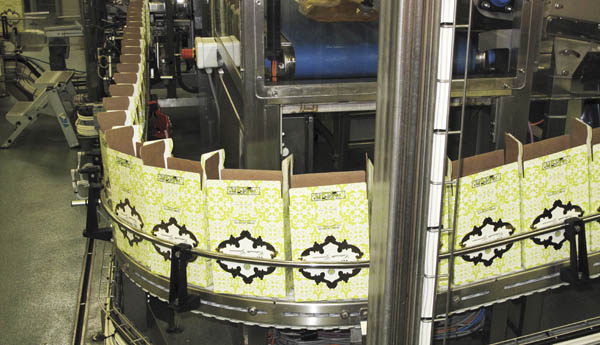
Close to their most important customers
Takis wanted to produce more of his own wines and he wanted to make it where the main market was, in Sweden and to Systembolaget. He gave his old friend Bo Thorson the mission to find something in Skåne where land prices are reasonable and where there are many ports and proximity to the continent.
In Simrishamn he found the Unilever warehouse buildings that were for sale. In 2006 they bought the premises and they immediately began to rebuild and redecorate one of northern Europe’s most modern wineries. It was ready in 2008 and, as Takis says, “My job is to produce what the market demands.”
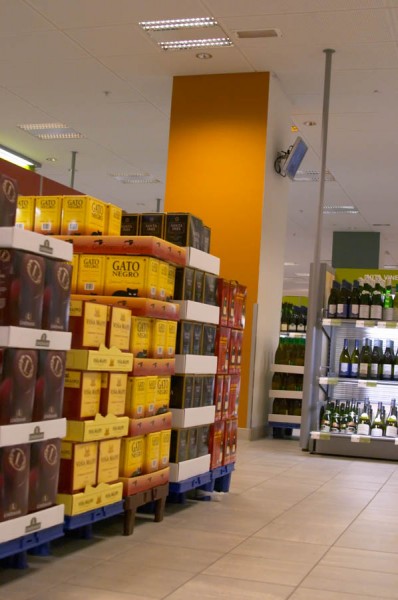
Systembolaget’s designer wines
To produce what the market demands might not be so easy today when Systembolaget’s buyers request wines on designed specification with specific aroma, colour and flavour properties from specified countries and grape varieties, with certain specified acid level, tannins and alcohol level, in short, wines that it is impossible to make in a “natural” way!
But as the Nordic Sea Winery’s President Bo Thorson dryly notes, “It has been a long road with a lot of permits from the County Administrative Board, the National Food Adminstration and the municipality. And we have not received a dime in contributions but have spent over 500 million SEK (some 50 million euro) on the project.”
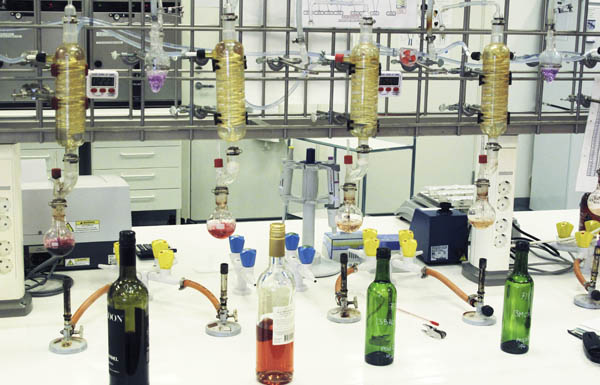
Focus on quality control, paired with environmental concerns
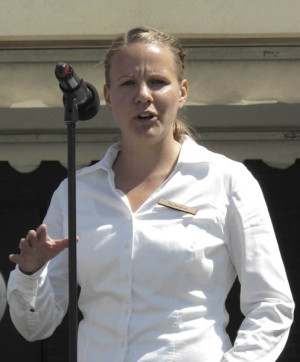
The big advantage of having your own winery is that you have full control on the process from the quality of the grape to the box or bottle. The grapes come from vineyards that are leased or from contracted growers. They have their own employees and winemakers on site handling the vinification.
The finished “raw wine” arrives in large flexi-tanks of 24,000 litres delivered by container ships. A flexi-tank is hermetically sealed, air-tight, hygienic and used only once. (Editors’ Note: It is like a giant bag-in-box, but in container size.)
During the warm months, they use cold-transport. The also think that the ships are more environmentally friendly. The alternative would be to send 1600 trucks per year across European roads.
Takis says that the freight from South Africa is the cheapest and then from Australia. Most expensive is shipping from Italy! I ask if it is because the mafia sets the prices? Takis smiles a little and say “Those guys are not so fun to deal with.”
Flexi-tanks with raw wine are unloaded in the port of Helsingborg. Approximately 3-4 trucks a day arrive to the winery for processing and blending, with the exception of wines from South Africa and Australia. There the wine laws say that only finished wine can be exported, so the only thing they do in Simrishamn is to stabilize, filter and package these wines.
Making wines to suit customer demand
All wines from Europe are blended and processed in Simrishamn. The winery has five winemakers employed. Chief winemaker Denis De La Bourdonnaye previously worked eleven years at Domaine Laroche in Chablis. He says that he tastes and approves every new batch before it can leave the winery. To his help he has four additional winemakers from Australia, Italy, Germany and Switzerland. I asked Takis how much vanilla essence and flavouring to use? “No, no, we don’t do such things. We only do what is allowed,” Takis said.
Much is allowed in the wine world. You can blend different varieties, in some cases add sugar, grape must or acidity. If, for example, it says Mauro Chardonnay 2013 on the label, one can have 15% wine from both other grape varieties or from other vintages without having to specify it on the label under EU rules. (Editor’s Note.: This applies to all wines produced in the EU, not just those blended in Simrishamn. Similar rules also exist in countries outside the EU.)
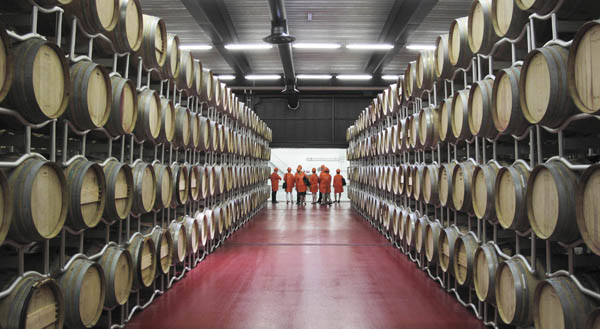
One other “processing” is to age the wine in barrels, and barrels they have plenty. In the barrel cellar they have over 1000 225-litre barriques of French oak.
To ensure the quality of the wines they also have their own laboratory with five employees that they consider quite on par with Systembolaget’s own laboratory.
85 employees make 25 million litres of wine
When Unilever closed its warehouse they made 30 people redundant. Today the winery has 85 employees and an annual production of up to 25 million litres (250,000 hectolitres). 650 000 litres are organic but this is growing all the time, says the quality manager Mia Davidsson. The plant produces fifty different brands such as the big sellers Umbala, Mauro and Vernissage. They can fill 3000 bag-in-boxes and 6,000 bottles per hour.
Annual production is thus enormous, but when they built the winery they designed it with good margin so without problems they can double production if demand increases and run multiple shifts.

Just-in-time production
As we wandered around the premises I expected to see huge pallets of bottles and bag-in-boxes up to the ceiling, but the only thing I saw was what they were just about to package. This is because all the wine is stored in huge stainless steel tanks under a protective gas blanket. It is only when they receive an order that they bottle / “box” the amount of wine that the customer order requires.
Bag-in-box wines are perishable goods
The proximity to the largest customer, Systembolaget, and the great demand for bag-in-box wine led to choosing Sweden as location for the winery, since, as Takis says, “We have the same wine in a bag-in-box and a bottle. I cannot see any business sense in the use of different wines. In contrast, a bag-in-box wine gets more sulphur added, because as soon as the wine is “bottled” in a bag it begins to oxidize. When one says that a red wine lasts 10 months, and a white 8 months after “bag-in-boxing”, I think it is totally wrong. It keeps for a maximum of a few months in an unopened Bib without getting worse. We can fill a bag-in-box today, deliver it tomorrow and in a week it is in the stores.”

Takis continues: “We export 10% of production mainly to Scandinavia, various border-shops, to France, the U.S. and Japan, but we’d rather not sell bag-in-box with too long transport distance, ocean freight to / from the USA can take 4-5 weeks and vibrations from vessels can damage the welding of the inner bag.”
New age local bottling (“härtappat”)?
Now, some might find it a bit strange to transport wine across the world to bottle it and to add value to it in Sweden. But it is really nothing new. Vin & Sprit (the ex-monopoly importer) owned three tanker ships M/S Vinia, M/S Vinlandia and M/S Vindemia who went all over Europe and picked up wines and spirits that were then unloaded at Sjövikskajen in Årstadal in Stockholm and were then blended and bottled in Sweden.
This activity ceased in 1991. At that time, about 80% of wine sales in Sweden were processed like that. It even had its own denomination, “härtappat”, meaning, literally, “bottled here”. Many a wine lover above a certain age will remember with a certain fondness the “härtappade” wines.
Good for Skane
I agree with the county governor Margareta Palsson and the chairman of the municipality board (mayor) Anders Jönsson that it is an important facility for Skåne and its eastern coastal region Österlen. It is good for jobs, and to make rural areas more vibrant and I am convinced that anyone with the slightest interest in wine who comes to Skåne will visit the facility.

They estimate 30,000 to 50,000 visitors a year, and perhaps even more when they also begin to press the grapes and ferment the wine in place.
But yes, it has perhaps more charm to visit a boutique winery that makes 10 to 15 thousand bottles with labels numbered by hand. What they do at Nordic Sea Winery is make wine for the normal average consumer, he who will pay perhaps up to 90 SEK (10 euro) for a bottle or 200 SEK (22 euro) of a three-litre bib, but not wines for great connoisseurs or wine geeks.
Roland Eriksson writes on BKWine Magazine on wine tastings with wine merchants and importers in Sweden. Roland is the author of a book on cognac (A Handbook: Cognac, 2007, published in Swedish) and one on rum as well as one on tea.
[box type=”info” style=”rounded” border=”full”]Nordic Sea Winery will no doubt become an important wine tourism destination. If you are interested in visiting wineries in the world’s leading wine regions then you can come on a wine tour with BKWine.
Travel to the world’s wine regions with the experts on wine and the specialist on wine tours.[/box]



